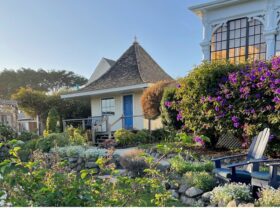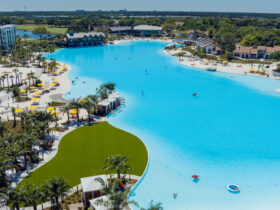As both a parent and an educator, I think the combination of natural beauty and the history of several of the many indigenous groups who lived on the land now known as the United States makes Navajo National Monument a must-do trip with your kids. I’ve written about the region in my story about 7 Iconic U.S. Attractions Kids Should See Before They Grow Up, but I wanted to expand on Navajo National Monument and Navajo and Hopi lands here because there’s so much to share.
The Hopi, San Juan Southern Paiute, Zuni, and Navajo are tribes that have inhabited the canyons of Arizona and New Mexico for centuries—a fact evidenced most dramatically in the cliff dwellings of Betatakin, Keet Seel, and Inscription House at Navajo National Monument.
Navajo National Monument hikes
After a long hiatus due to Covid-19, guided tours to Betatakin and Keet Seel are now offered again. Both Betatakin and Keet Seel guided hikes are offered from Memorial Day to Labor Day, generally early on weekend mornings. The three- to five-hour Betatakin hike is strenuous, and the 17-mile Keet Seel hike is a major endeavor, so you should be in good shape to participate. Unsupervised hikes to the sites aren’t allowed.
On the less physically strenuous end of things, though, are several doable, informative, and beautiful self-guided hikes that start behind the Visitor Center and are perfect for families. Note that none of these trails lead to the famous cave dwellings.
- The Sandal Trail (1.3 mi) is the only self-guided hike from which visitors can see the cave dwellings and to get the best view of Betatakin, binoculars will serve you well. Sandal is paved and has a gentle elevation change.
- The .8-mile Aspen Trail may be short, but has a steep elevation change and is strenuous. However, those willing to try will be afforded an amazing view of a relic forest on the canyon floor.
- The flat but unpaved Canyon View Trail (.8 mile) leads to the park’s historic ranger station and offers exactly what its name promises.
As you hike these trails through the Monument, you can imagine the earliest hunter/gatherer origins of the land. Inhabitants eventually began to grow maize and other crops. These first farmers built their above-ground homes in the large, natural alcoves that formed in the towering Navajo Sandstone Formation and are now known to us as Betatakin, Keet Seel, and Inscription House. The porous Navajo Sandstone served as safe and efficient homelands, as the alcoves offered shelter from the elements and provided natural spring water.
ROAD TRIP: 10 Unforgettable RV Road Trips in the U.S.
Today, the land surrounding Navajo National Monument is part of the Navajo Nation. The Navajo, or Diné, have lived in this region for several hundred years.
Explore Navajo Interactive Museum
After (or before) appreciating the natural wonders of the National Park, a trip to Tuba City will afford you understanding at the Explore Navajo Interactive Museum. Created with the help of leading Navajo scholars, this learning center makes understanding the history and artistry of native peoples accessible to all.
Your journey through the museum is described this way: “Four monumental directional symbols divide the Museum into four quadrants. Traveling clockwise, you will enter the east and move to the south, west and north where in each quadrant you are introduced to the land, language, history, culture and ceremonial life of the Navajo.” Additionally, onsite demonstrations are available, and visitors can see up close a traditional Navajo hogan (home) and learn Navajo creation stories along with other elements of Navajo culture and traditions.
More great stops on Navajo and Hopi Lands
If your family is interested in learning about the Native American experience, both through history and today, there is no better way to gain insight than by spending time on native land. While in Tuba City, World War II buffs will love the Navajo Code Talker Museum, which details the vital role of Code Talkers to transmit information on tactics, troop movements, orders and other vital battlefield information via telegraphs and radios in their native dialect … a much faster method than the traditional Morse Code. The Code Talker Museum is connected to the Tuba City Trading Post, which, while serving as a souvenir shop, also has fair priced and authentic local crafts and art and is a great way to support the local community while learning more about Native artistry.
The Navajo Village Heritage Center in Page (about a one-hour drive from Tuba City) offers a unique opportunity to engage in Navajo culture. Here, visitors can experience authentic Navajo food and see Plains Indian dance performances and traditional story-telling. Check out the Red Heritage website for upcoming performances and meals.
Drive across Navajo land to Window Rock, Arizona, to see the Window Rock Navajo Tribal Park and Veterans Memorial. Not only will you be treated to the magnificent natural beauty of Tségháhoodzání (Window Rock), but you will also find yourself in the administrative capital of the Navajo Nation. Nearby Gallup, New Mexico serves as a gateway to a deeper dive into Native people, and their history, culture, and artistry.
More from FamilyVacationist:
- Planning a Family Trip to the Grand Canyon
- 7 Kid-Friendly Arizona Dude Ranches
- 19 Best Booking Sites for Vacation Home Rentals












